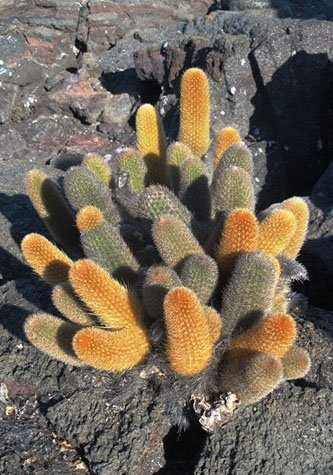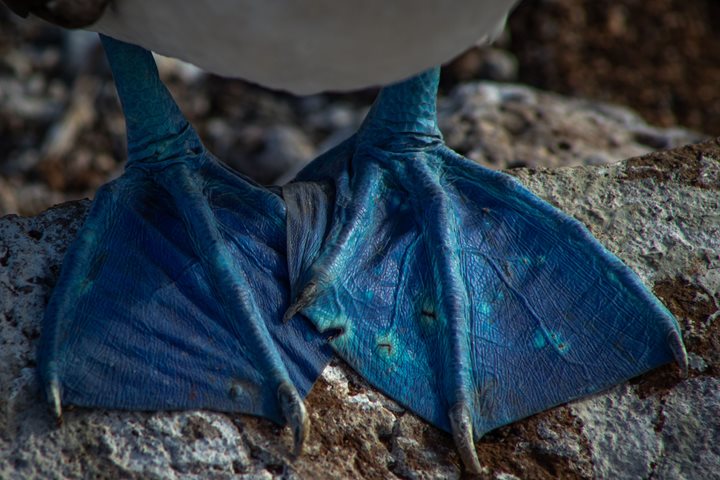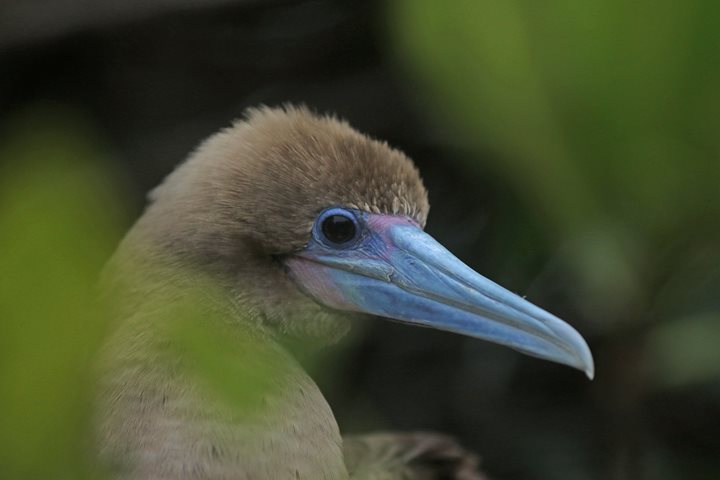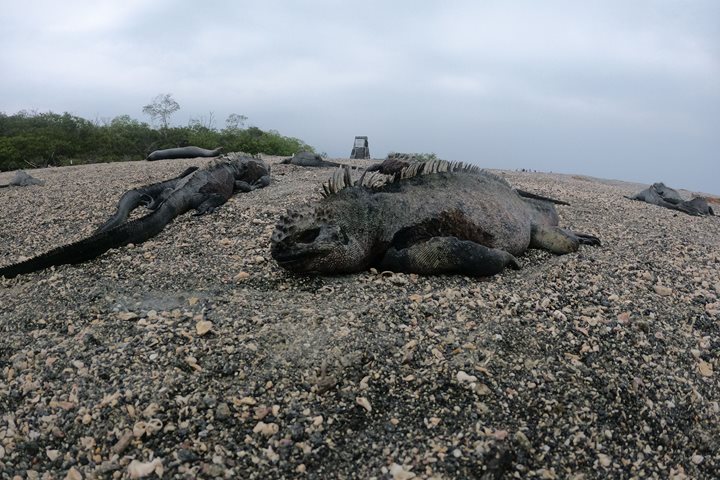The Galápagos are a group of volcanic islands that are still relatively young. Its westernmost islands, Fernandina and Isabela, are the youngest and both have erupted as recently as 2009. This is also the most remote region of the archipelago, which we reached after a long, overnight navigation. As the day started we were still cruising along the impressive coastline of northern Isabela. Those of us who were on deck were very fortunate to see a waved albatross, an endemic species that is rather unusual on this side of the archipelago.
Northern Isabela is crossed by the equator line, and as soon as we reached the latitude of 0 degrees we all celebrated this event by joining the captain at the bridge!
Soon afterward, we dropped anchor at Punta Vicente Roca. This is an area of extreme beauty and impressive tall cliffs, where wind and sea erosion have carved the lava and tuff walls, creating a stunning landscape. There is no landing site here, so we boarded Zodiacs and set off for a ride along this beautiful coast. Life was everywhere we looked: Nazca and blue-footed boobies rested on rocky ledges not far from swallow-tailed gulls.
On the most abrupt and inaccessible part of the coastline lives a colony of Galápagos fur sea lions. We observed several of them climbing the large lava blocks in order to seek shade and avoid overheating. By now, the cloud cover was gone and the sun shone brightly in a magnificent blue sky! As we continued along the coast, many brown shadows appeared just under the surface of the water. These were Pacific green sea turtles, who come to this area in great numbers to forage on the abundant seaweed.
The sea surrounding Punta Vicente Roca is very deep and large creatures visit the area, including an enormous manta ray cruising just below the surface. Further out from the coast were giant sunfish in large numbers. Before midday we still had time to explore the local underwater world, so we returned to the calm bay where dozens of Pacific green sea turtles rested, floated or slept. It was almost surreal, as they didn’t seem to mind our presence at all!
Across from Isabela lies Fernandina, probably one of the last pristine islands on Earth. A dark, tall island covered in fresh basalt rock, it is certainly an inhospitable place. From a distance it seemed devoid of life, but we soon realized that this was not the case. Punta Espinosa, a tiny peninsula, is the habitat of a huge colony of marine iguanas. The tide was low, and in the early afternoon many of them were returning to their favorite spot where they could soak up the sunshine.
The vast lava fields of Punta Espinosa looked uninviting yet beautiful, particularly when covered by yellow-tinged lava cacti, specks of color in the blackness of the area. Endemic flightless cormorants inhabit this area. We were glad to see that breeding season had already started, always great news considering the size of their population. There is also a small colony of Galápagos sea lions here. A robust male kept his territory well-patrolled while several females took a long siesta. The low tide revealed many tidal pools, and we had a lot of fun finding many creatures in and around them, including spotted eagle rays, sea turtles, marine iguanas, oystercatchers, fishes of various species and sizes, bright-colored Sally Lightfoot crabs, and even an octopus!
The majestic shield volcanoes of Isabela and Fernandina stood tall around us, their summits totally clear. As the sun set, their slopes turned pink and orange. What a fantastic sunset we enjoyed in this remote corner of the Pacific Ocean!







